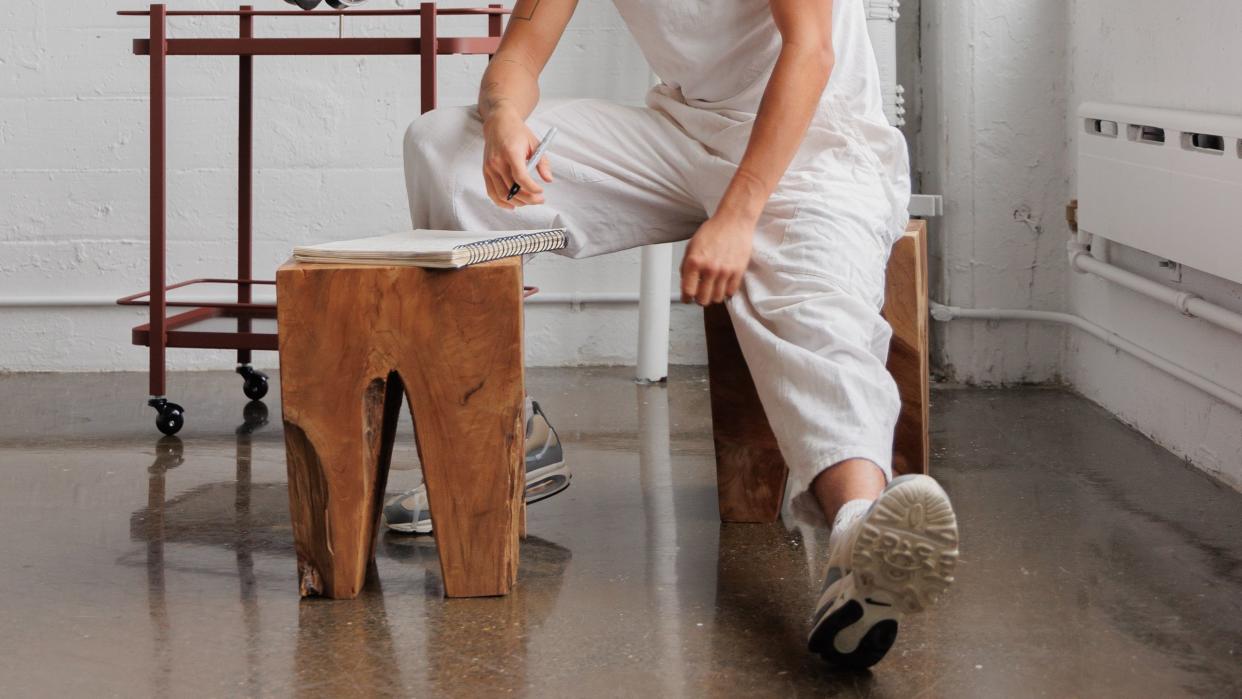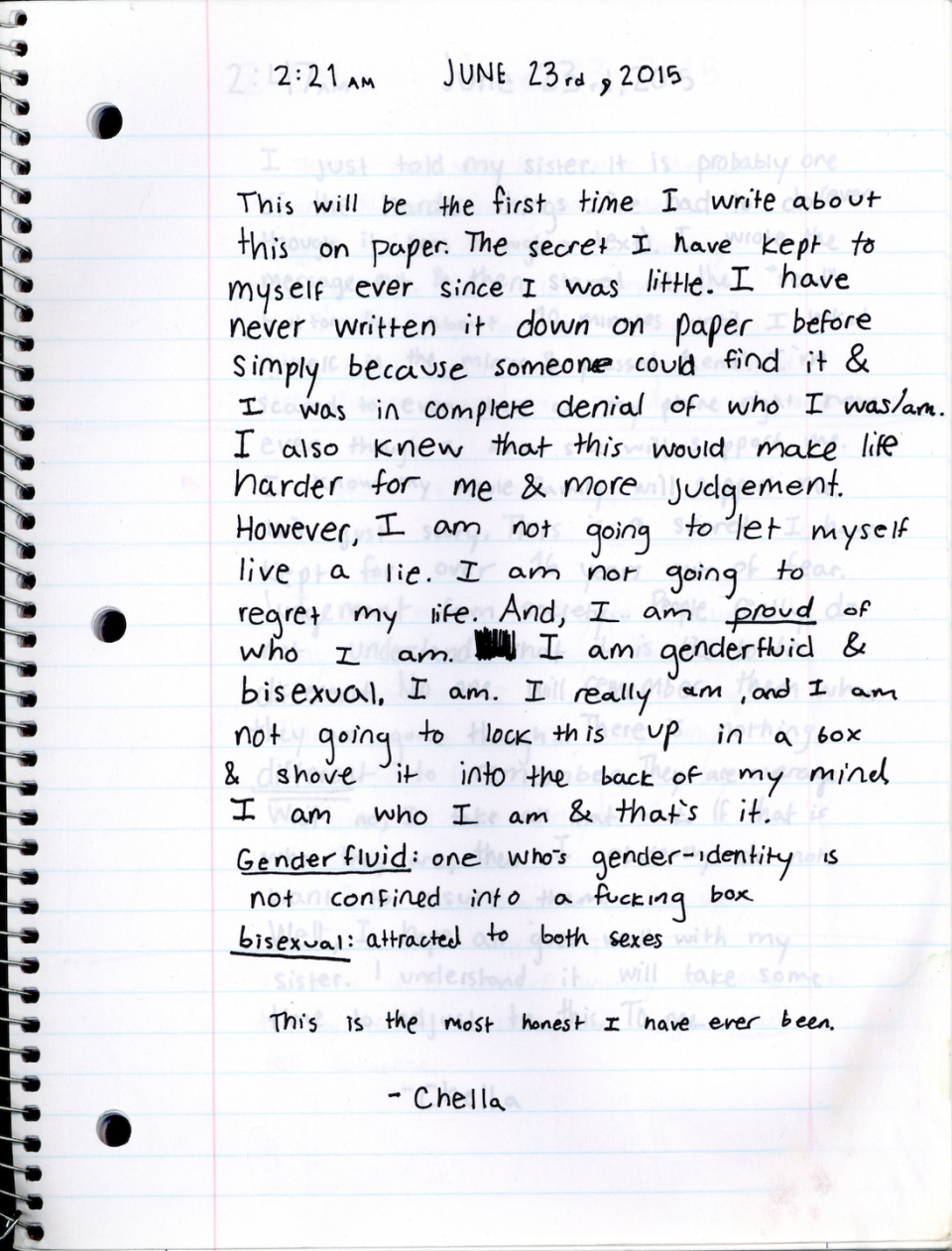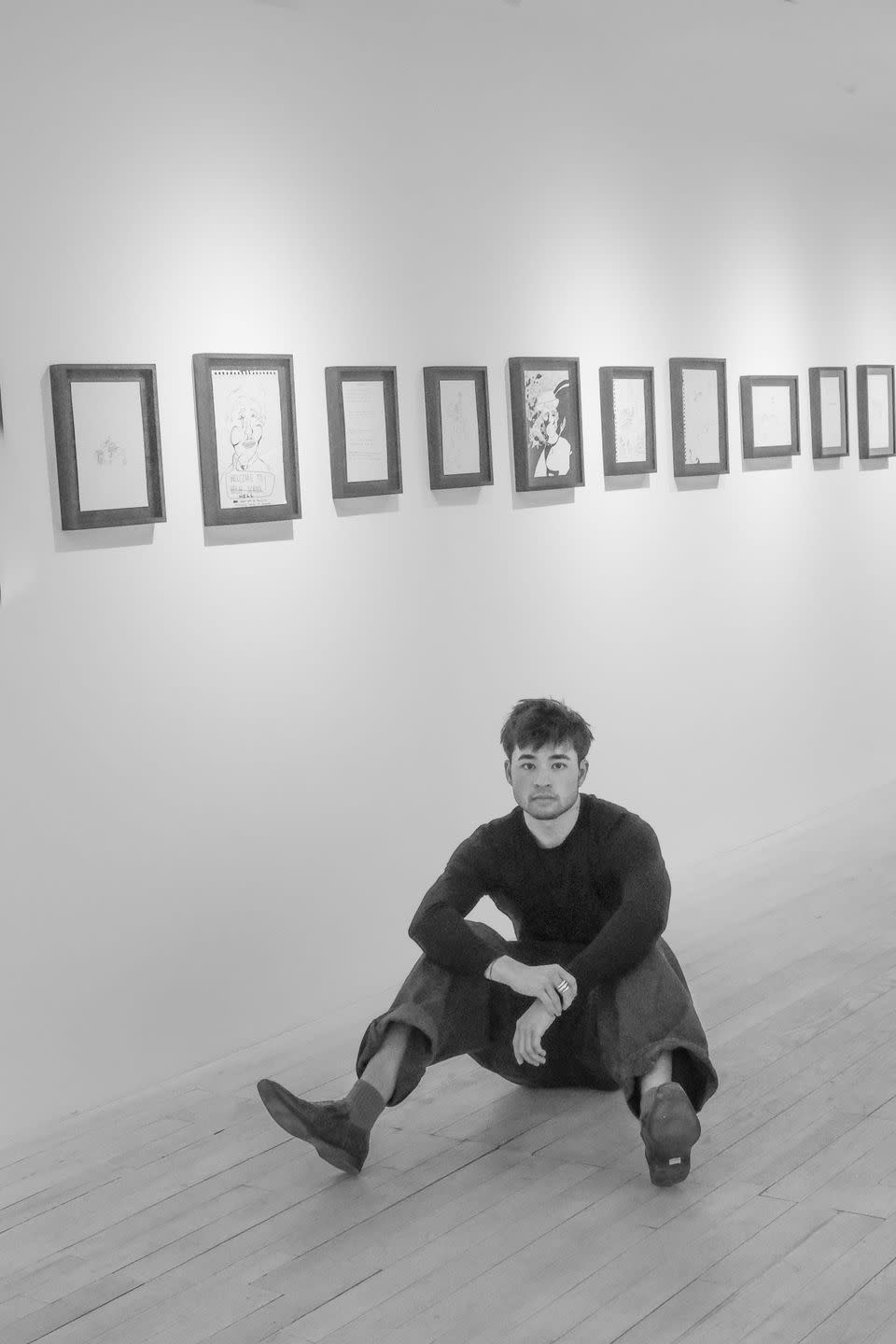Chella Man Is Done Explaining His Existence

- Oops!Something went wrong.Please try again later.
"Hearst Magazines and Yahoo may earn commission or revenue on some items through these links."
On June 23, 2015, Chella Man sat down to write at 2:21 a.m. The 15-year-old had spent the first half of the night pacing while on his phone, sifting through “every queer, LGBQ dictionary in existence” online. “I had waited my whole life for this moment,” he says, “so I thought, ‘You know what? If I’m going to write this down, I better get it right.’”
It was mere days before the U.S. Supreme Court would rule in favor of same-sex marriage, and Man was sitting on a mixture of emotions—mostly, because he couldn’t tell his family how he was personally affected by this historic milestone. So he picked up his pen, one of the few bastions of safety in his conservative, predominantly white suburb in central Pennsylvania. “This will be the first time I write about this on paper,” the note began. Man went on to say he could no longer keep what, at the time, he considered his deepest, darkest secret: his queerness. In his online research, he had landed on the terms genderfluid and bisexual, and says now that he’s proud of how close his teenage self got to describing himself. The note ends with a sentiment readers can feel viscerally as they take in the young, black-ballpoint penmanship: “This is the most honest I have ever been.”
Nearly nine years later, this note—and the monumental point in time it represents—is one of many framed works exhibited in “It Doesn’t Have to Make Sense.” Opening today at Hannah Traore Gallery, the show features sketchbook drawings, paintings, and text produced by Man from 2014 to the present day. “That kid certainly couldn’t have imagined this page would be in a solo show in New York City,” he says. “I never anticipated the kind of audience that I now have.”

Now 25, Man has made a name for himself as an actor, model, artist, and activist whose body of work speaks to his intersectional identities as a deaf, trans person of color, being of Chinese and Jewish descent. What started as a YouTube channel in 2017—where Man candidly shared his experiences with gender, sexuality, deafness, and generally what it was like to move about the world in his shoes—quickly evolved into a platform that was equally groundbreaking for people who saw themselves represented in Man’s story, as well as those whose heteronormative lenses could stand to be shattered. Within a year of his social media launch, Man made history as the first deaf trans model signed to international agency IMG, going on to model for the likes of Calvin Klein and Tommy Hilfiger. He intentionally brings his full self to every partnership or creative pursuit, be it a jewelry collaboration celebrating the deaf and hard-of-hearing community or a clothing line with Open Ceremony inspired by Man’s experience transitioning. His commitment to art as a tool for visibility and representation made its way to the big screen in 2019 for the second season of the DC Universe series Titans, in which Man portrayed Jericho, a superhero who communicates exclusively in American Sign Language after losing the ability to speak. As if those résumé bullets weren’t enough, last year Man also released and internationally screened his first short film, The Device That Turned Me Into a Cyborg Was Born the Same Year I Was, which highlights his relationship with his cochlear implant. In tandem with his show at Hannah Traore Gallery, he is working with the Jewish Museum on a live show on bodily autonomy, premiering May 2 at Performance Space New York.
Amidst a life he jokingly describes as “an unintentional hurricane,” what has remained consistent is how Man has documented his inner experience. “Every single sketch, every piece of paper was a yearning for safety … an act of survival, and a grounding practice for me,” he says of the years he spent drawing, making lists, and detailing his thoughts. This intimate relationship with record-keeping has resulted in countless boxes of papers, which Man hopes to archive eventually.
Sifting through these documents was a long process for both Man and gallerist Traore. The two young creatives first met through Man’s residency at Silver Arts Project in 2022 in downtown Manhattan, where he juggled projects from painting for the U.S. Open to working on multiple films and serving as a global ambassador for Nike. “We had a studio visit, and Chella came through on a skateboard—do you remember that?” Traore asks on a Zoom call with the two of them. Giggling, they both reflect on their instant connection, rooted in their shared tendency to talk about their families, and other commonalities as Jewish people of color with ties to Canada, who understand what it means to find themselves, often, in situations where whiteness predominates. “That just doesn’t happen often,” Man says of meetings like theirs. Traore adds, “We almost immediately decided that we were going to do something together.”
The two spent last fall flipping through Man’s sketchbooks, creating a map of his artistry through intimate snapshots—from self-portraits and lists interspersed with drawings to reflections on what it feels like to get top surgery and to be unable to hear. “Hannah’s vision and eye helped me find threads in my work,” Man says, “and what really ties everything together is reflection.” Traore’s eye—which has also elevated the unique work of fashion designer Misha Japanwala, photographer Camila Falquez, and textile artist Anya Paintsil—is also responsible for the subtle but intentional framing choice to make clear that the pages on display in “It Doesn’t Have to Make Sense” have been ripped out of a sketchbook, that these pages had a life quite personal to Man before the exhibit.
Perhaps most poignant of the ideological pillars that mold Man’s show is the concept of safety—something that, to the artist, means “foundationally being understood and not having to use any energy to explain my existence or my accommodations.”

For a disabled person in a world that caters to the able-bodied, such a sense of safety is not a given. Man and Traore have been met with many obstacles in their efforts to make the upcoming show physically accessible to people using wheelchairs. The artist experienced similar challenges when he curated “Pure Joy,” a show of 14 disabled artists’ work, at TriBeCa’s 1969 Gallery.
“The whole team went above and beyond to build a ramp, reshape their doors, and consult disability organizations for the show, just like Hannah is,” Man says of the 2022 exhibit. But because a ramp must extend to the sidewalk under New York City building codes, their efforts were deemed a fire hazard; at 1969, this meant dealing with building fees and complaining residents. To combat similar issues of inaccessibility, Traore and Man are trying to put together virtual-reality programming for the new exhibit, so folks who can’t enter the space can still experience it in some capacity.
The irony of this is not lost on Man. While he feels hopeful about the growing number of inclusive narratives and general visibility of “multi-marginalized individuals” like himself, “disability justice is just a continuous battle,” he says. According to the World Health Organization, one in six people today experience disability at some point in their lives—a proportion that, as Man points out, transcends race, sexuality, gender, and socioeconomic status. And yet often, “disability is the last thing mentioned,” he says. Man and Traore hope to ensure this won’t be the case for those who want to engage with “It Doesn’t Have to Make Sense.”
Ultimately, Man is walking into this show with pride—for who he is today and for the many iterations of himself he has gotten to revisit through the process of putting together the exhibit. “I have so much gratitude for the way that I chose to alchemize my feelings when I didn’t have a framework but to draw and talk to myself,” he says. “This show is really helping me understand myself more.”
You Might Also Like

